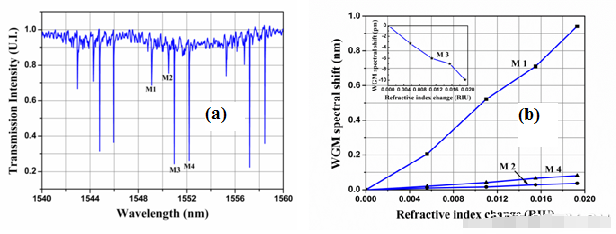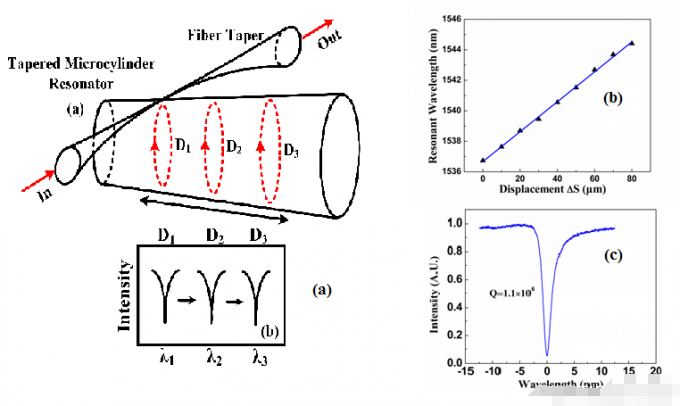Micro-nano photonics mainly studies the law of interaction between light and matter at micro and nano scale and its application in light generation, transmission, regulation, detection and sensing. Micro-nano photonics sub-wavelength devices can effectively improve the degree of photon integration, and it is expected to integrate photonic devices into a small optical chip like electronic chips. Nano-surface plasmonics is a new field of micro-nano photonics, which mainly studies the interaction between light and matter in metal nanostructures. It has the characteristics of small size, high speed and overcoming the traditional diffraction limit. Nanoplasma-waveguide structure, which has good local field enhancement and resonance filtering characteristics, is the basis of nano-filter, wavelength division multiplexer, optical switch, laser and other micro-nano optical devices. Optical microcavities confine light to tiny regions and greatly enhance the interaction between light and matter. Therefore, the optical microcavity with high quality factor is an important way of high sensitivity sensing and detection.
WGM microcavity
In recent years, optical microcavity has attracted much attention due to its great application potential and scientific significance. The optical microcavity mainly consists of microsphere, microcolumn, microring and other geometries. It is a kind of morphologic dependent optical resonator. Light waves in microcavities are fully reflected at the microcavity interface, resulting in a resonance mode called whispering gallery mode (WGM). Compared with other optical resonators, microresonators have the characteristics of high Q value (greater than 106), low mode volume, small size and easy integration, etc., and have been applied to high-sensitivity biochemical sensing, ultra-low threshold laser and nonlinear action. Our research goal is to find and study the characteristics of different structures and different morphologies of microcavities, and to apply these new characteristics. The main research directions include: optical characteristics research of WGM microcavity, fabrication research of microcavity, application research of microcavity, etc.
WGM microcavity biochemical sensing
In the experiment, the four-order high-order WGM mode M1(FIG. 1(a)) was used for sensing measurement. Compared with the low-order mode, the sensitivity of the high-order mode was greatly improved (FIG. 1(b)).
Figure 1. Resonance mode (a) of the microcapillary cavity and its corresponding refractive index sensitivity (b)
Tunable optical filter with high Q value
First, the radial slowly changing cylindrical microcavity is pulled out, and then the wavelength tuning can be achieved by mechanically moving the coupling position based on the principle of shape size since the resonant wavelength (Figure 2 (a)). The tunable performance and filtering bandwidth are shown in Figure 2 (b) and (c). In addition, the device can realize optical displacement sensing with sub-nanometer accuracy.
Figure 2. Schematic diagram of tunable optical filter (a), tunable performance (b) and filter bandwidth (c)
WGM microfluidic drop resonator
in the microfluidic chip, especially for the droplet in the oil (droplet in-oil), due to the characteristics of the surface tension, for the diameter of tens or even hundreds of microns, it will be suspended in the oil, forming a nearly perfect sphere. Through the optimization of refractive index, the droplet itself is a perfect spherical resonator with a quality factor of more than 108. It also avoids the problem of evaporation in the oil. For relatively large droplets, they will “sit” on the upper or lower side walls due to density differences. This type of droplet can only use the lateral excitation mode.
Post time: Oct-23-2023







